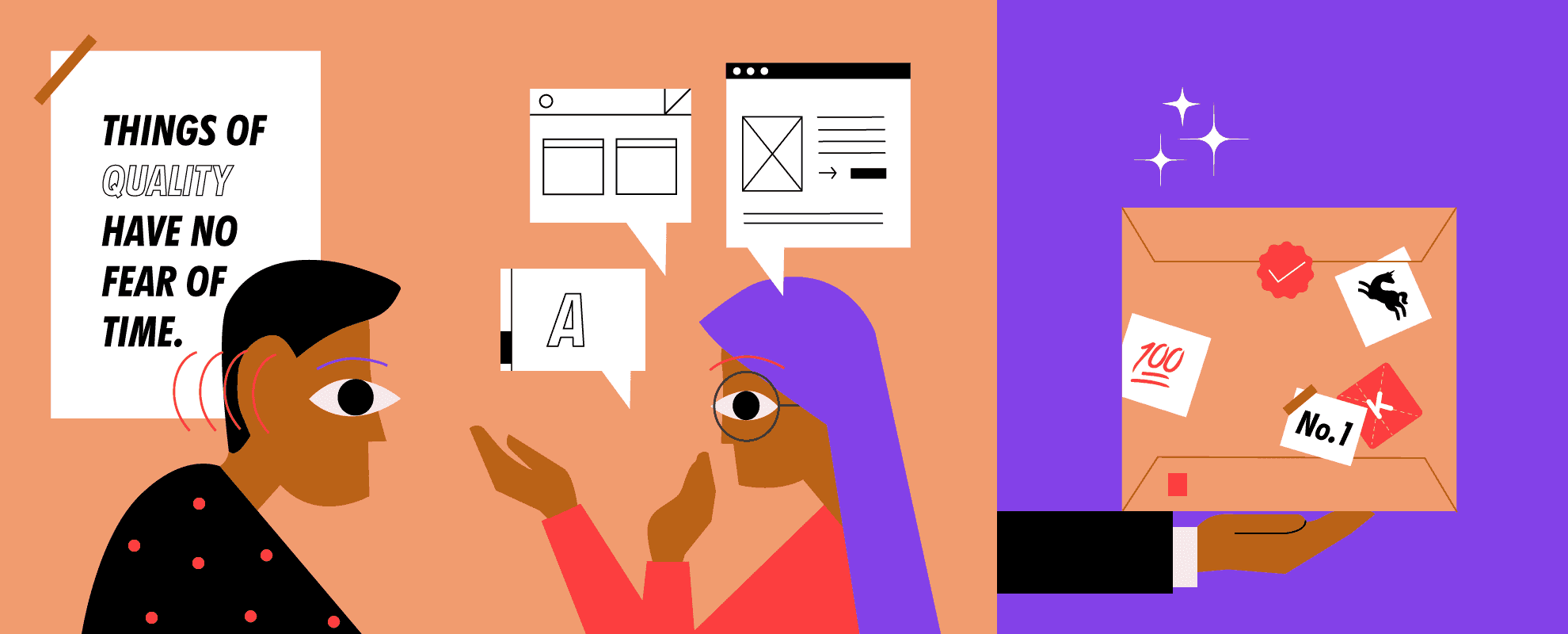Success with digital products doesn’t just happen, and especially not overnight. Great products are very well researched -- they focus on solving a real problem, offer the best possible solution to that problem, and are launched on a market that is showing some serious demand for that particular solution.
But more importantly, these are the products that people care about because they have user value embedded in their core. Every feature is carefully thought out as a means to help the end user achieve a particular goal. Successful products provide great experiences, they’re easy to use and learn, they’re visually appealing, and they provide outstanding value to the users.
Yet a large majority of new digital products fail because companies that build them don’t do enough of planning, research, and user testing, or they simply lack the technical know-how to build a digital product that will survive in the age of constant innovation.
Designing Digital Products for Value
As an agency that works with our clients on designing and building superior digital products, we spend a lot of time helping them bridge the gap between an idea and a profitable digital product. We focus on the UX and value to the user at all stages of the product development process. This means working extra hard to create user and customer experiences that engage and delight people.
We look at the outcomes that create value for the end user and communicate that value to our clients from the outset of the project. I believe this is something we all need to do more. We need to think about designing digital products for value, and we’ll get there by asking the right questions.
How do different users define value? What is it that they want to achieve by using your product? What value do you promise to deliver? How can you empower cross-functional teams in your company so they can decide how to best deliver that value to customers?
By gaining deep insight into your customers’ wants and needs, you’ll be able to amplify what they value and deliver products that they’re willing to buy. Enticing users to purchase and use the product is what makes it valuable to the business as well.
Innovate with the Customer in Mind
If you look closely, most successful products are innovative in their own way. And if you want to excel at digital value delivery, you’ll have to find a sustainable way to introduce innovation during the entire product lifecycle. Your team, including product, design, and technology, needs to be open to constantly exploring ideas and executing on those that prove to be not only possible, but also profitable.
Keep in mind that every innovation you introduce exists only to better serve your users - so keep their needs front and center through the whole product innovation process. We’ll talk about how you achieve that next.
Prototype, test, refine, validate
Taking a digital product to market has to be a final step in a chain of actions that brought you to that final, user-tested, and market-ready version. It should be the result of a prototype-test-refine-validate process. When launching a new product, following these four steps can literally mean the difference between success and failure.
By creating interactive prototype of your web or mobile application, you’ll be able demonstrate and test its main functions in the most time and cost-efficient manner possible. You’ll be able to put the design in the hands of real users to test your application’s usability, validate your assumptions, remove any issues and points of friction, and ensure you're creating exceptional UX before the app goes into development.
With rapid prototyping, you’ll move fast from initial idea to a product that integrates your user’s value elements and that you can confidently get to market.
Streamline Value Delivery
Since a digital product becomes valuable only once it is delivered, the delivery process should not be overlooked. Product delivery needs to be streamlined, with frequent and continuous releases. If you create exceptional digital experiences, make sure to properly support and scale those experiences to meet the evolving customer needs.
This is not so difficult to achieve when you’re a lean and agile startup focused on delivering the best possible product and serving every customer like they're THE customer. However, as most startups get bigger and more successful they somehow lose their ability to deliver ongoing value efficiently.
If your company is growing rapidly, don’t lose sight of the processes that will let you launch differentiating products and features, run usability tests to gather user feedback, and iterate to meet their needs.
Summary
Customers are becoming more demanding, but their core needs remain the same - they’re looking for convenience, security, and they want to feel that a digital solution is focused on solving their problems.
The way in which you can meet their needs, however, is changing because the boundaries of what’s technologically possible are constantly stretching. You can now leverage new technologies to solve customer problems that so far seemed impossible to solve.
Successful digital products are not defined by the wealth of features and functionality, they’re designed to solve a core customer need or a problem, and iterated and evolved over time based on the feedback of real people using them.
KonceptApp
Quickly build and user test your prototypes for a risk free product launch!
Sign up for a FREE trial
